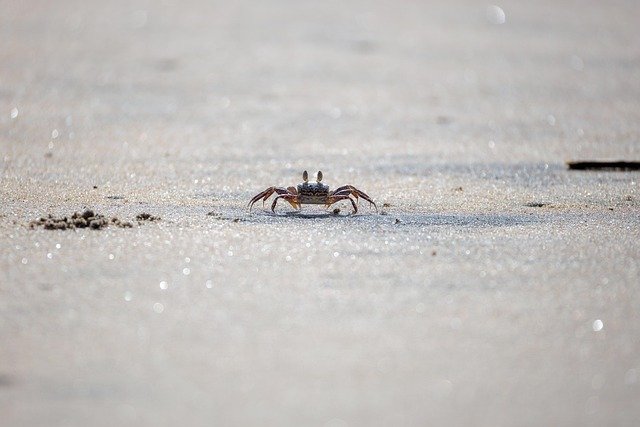The Hidden World of Horseshoe Crab Conservation
Beneath the waves of our coastal waters lies a prehistoric marvel that has captured the imagination of scientists and conservationists alike. Horseshoe crabs, ancient survivors of Earth's tumultuous past, now face unprecedented challenges in the modern world. This article delves into the fascinating realm of horseshoe crab conservation, exploring the efforts to protect these living fossils and their crucial role in both marine ecosystems and human medicine.

The Ecological Significance of Horseshoe Crabs
Horseshoe crabs play a vital role in coastal ecosystems, serving as both predators and prey. Their eggs provide a critical food source for migratory shorebirds, particularly the threatened red knot, which times its migration to coincide with horseshoe crab spawning. The crabs’ burrowing activities also help aerate sediment and distribute nutrients, benefiting other marine organisms.
Medical Marvels: The Blue Blood Revolution
Perhaps the most surprising aspect of horseshoe crab conservation is its connection to human health. The blue blood of these ancient arthropods contains a unique compound called Limulus Amebocyte Lysate (LAL), which is used to detect bacterial endotoxins in medical products. This makes horseshoe crab blood an invaluable resource in the pharmaceutical industry, used to ensure the safety of vaccines, injectable drugs, and medical devices.
Threats to Horseshoe Crab Populations
Despite their importance, horseshoe crab populations face numerous threats. Overharvesting for bait in the fishing industry and biomedical bleeding have led to significant declines in some areas. Habitat loss due to coastal development and sea-level rise further compounds the problem. Additionally, pollution and plastic debris in their breeding grounds pose serious risks to their survival.
Conservation Strategies and Innovations
Efforts to protect horseshoe crabs involve a multi-faceted approach. Habitat restoration projects aim to create and maintain suitable spawning beaches. Strict harvesting regulations and quotas have been implemented in many regions to prevent overexploitation. Some states have even banned the use of horseshoe crabs as fishing bait altogether.
The Future of Horseshoe Crab Conservation
As awareness grows about the importance of horseshoe crabs, so do innovative conservation methods. Researchers are developing synthetic alternatives to LAL, which could reduce the need for horseshoe crab bleeding. Citizen science projects engage local communities in monitoring and protecting spawning sites. These efforts, combined with continued research and public education, offer hope for the future of these ancient mariners.
The Economic Impact of Conservation
The horseshoe crab conservation movement has significant economic implications. The biomedical industry’s reliance on LAL creates a market valued at hundreds of millions of dollars annually. However, the development of synthetic alternatives could disrupt this market. On the other hand, ecotourism centered around horseshoe crab spawning events is gaining popularity, offering a sustainable economic incentive for conservation.
Challenges in Global Conservation Efforts
While progress has been made in some regions, horseshoe crab conservation faces challenges on a global scale. Different species of horseshoe crabs inhabit coastal areas across Asia and North America, each facing unique threats. Coordinating international conservation efforts and standardizing protection measures across different countries remains a complex task.
The Role of Technology in Conservation
Advancements in technology are revolutionizing horseshoe crab conservation. Satellite tracking and genetic studies provide valuable insights into population dynamics and migration patterns. Artificial intelligence and machine learning algorithms are being employed to analyze vast amounts of data, helping researchers make more informed conservation decisions.
Educational Initiatives and Public Engagement
Raising public awareness is crucial for the success of horseshoe crab conservation. Educational programs in schools and coastal communities help foster a sense of stewardship for these ancient creatures. Interactive exhibits at aquariums and nature centers allow people to learn about horseshoe crabs up close, inspiring a new generation of conservationists.
The Intersection of Culture and Conservation
Horseshoe crabs have long held cultural significance in many coastal communities. From traditional medicines to artistic inspirations, these creatures are woven into the fabric of local heritage. Conservation efforts are now working to integrate these cultural values, recognizing that successful protection strategies must consider both ecological and cultural perspectives.
In conclusion, the world of horseshoe crab conservation is a complex and fascinating intersection of biology, medicine, economics, and culture. As we continue to unravel the mysteries of these living fossils, our efforts to protect them not only ensure the survival of an ancient species but also safeguard vital ecosystem services and medical resources. The story of horseshoe crab conservation serves as a powerful reminder of the intricate connections between human well-being and the health of our natural world.





